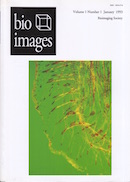Volume 4, Issue 1
Displaying 1-3 of 3 articles from this issue
- |<
- <
- 1
- >
- >|
Regular Article
-
1996 Volume 4 Issue 1 Pages 1-7
Published: 1996
Released on J-STAGE: September 09, 2021
Download PDF (37262K) -
1996 Volume 4 Issue 1 Pages 9-12
Published: 1996
Released on J-STAGE: September 09, 2021
Download PDF (2742K) -
1996 Volume 4 Issue 1 Pages 13-19
Published: 1996
Released on J-STAGE: September 09, 2021
Download PDF (69154K)
- |<
- <
- 1
- >
- >|
